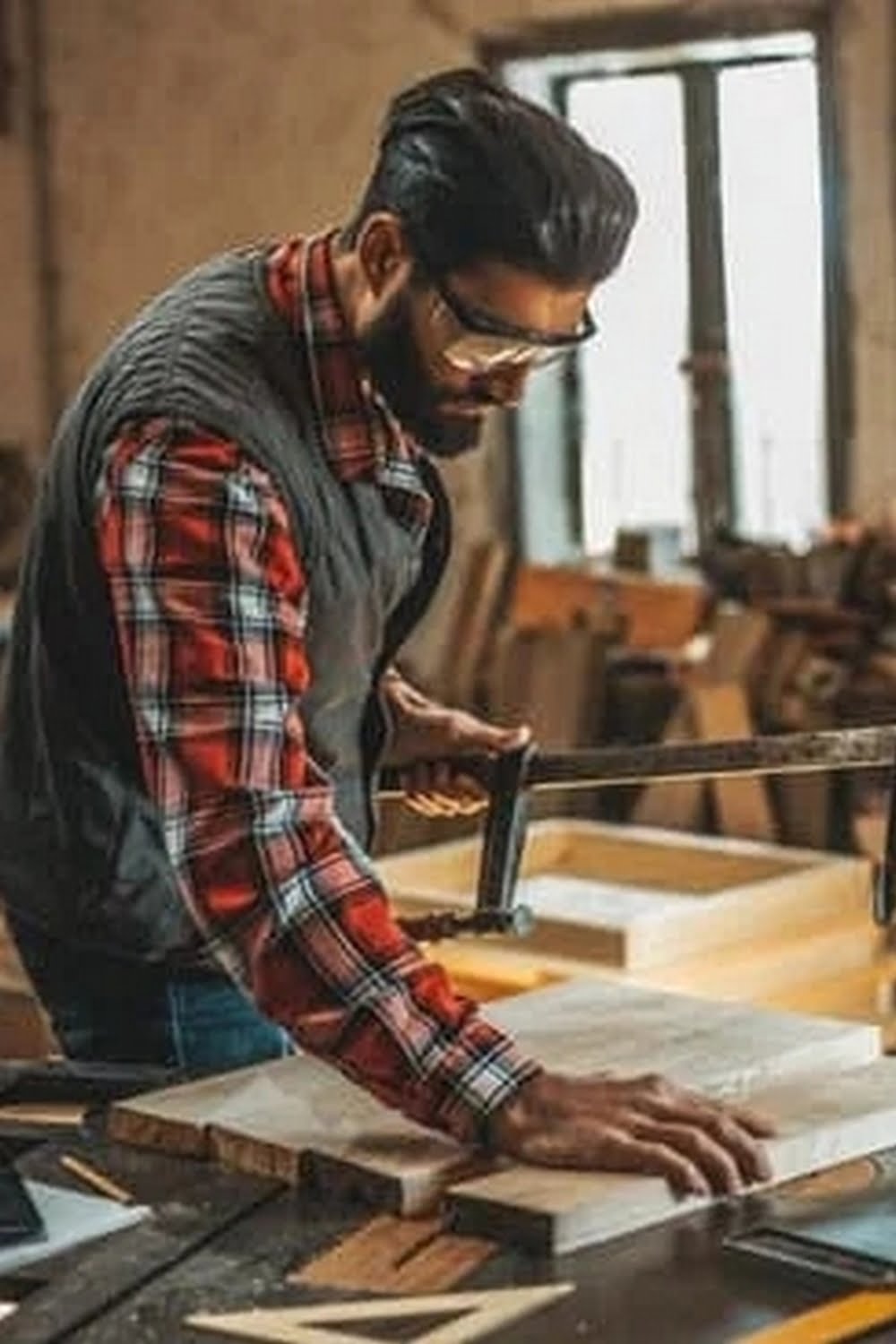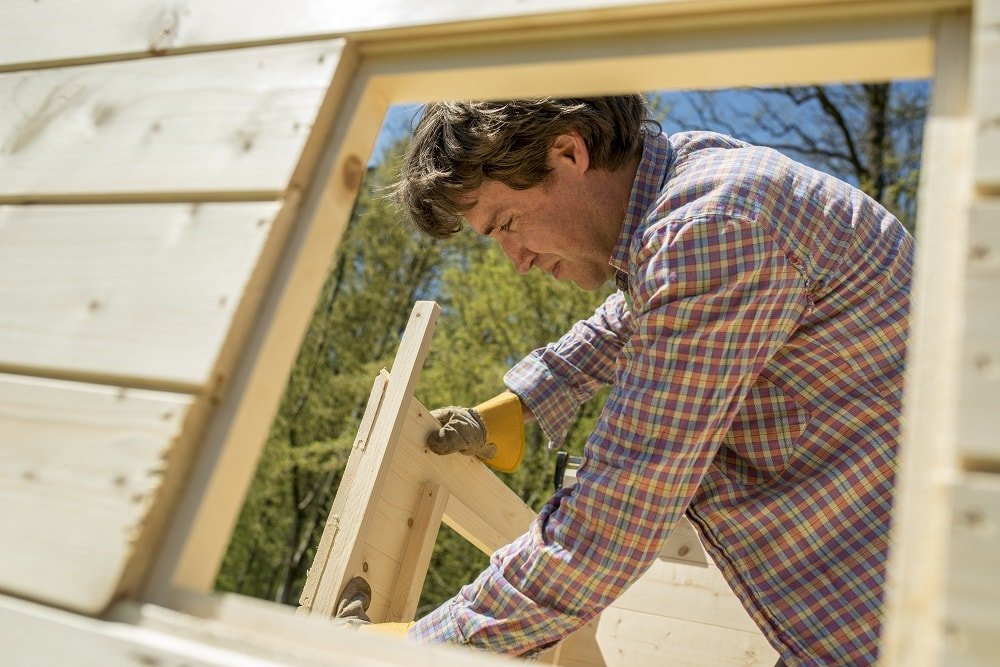Introduction to Sloyd Woodworking
The history of sloyd woodworking can be traced back to the 19th century, when a Swedish educator named Otto Salomon developed the craft in Helsinki. His aim was to teach children manual dexterity, problem-solving skills and hand strength through building projects. As a result, sloyd woodworking started becoming popular in Finland and other parts of Europe soon after.
Today, sloyd woodworking is still widely popular with both professional and amateur craftsmen. Its unique approach to teaching allows a person to develop creative solutions for any particular project. Many individuals have used it to create decorative accessories for their home such as birdhouses, bedsides tables, picture frames and more. It is also used in educational settings since it fosters creativity and allows students to explore basic motor skills and craftsmanship at the same time.
Sloyd woodworking offers many benefits over traditional methods of construction. For starters, it emphasizes precision over speed; every joint must be carefully measured and perfectly entwined with those adjacent to it in order for the final product to look good. Because of this attention to detail, the result is often far superior to anything that could be achieved with tools like saws or hammers alone. Additionally, because no specific tools are required, sloyd projects can usually be done at home without requiring an expensive workshop setup or specialized materials. Finally, its self-reinforcing structure encourages people to find unique solutions or ways of making existing designs even better – meaning there’s always something new you can discover with this hobby!
Essential Woodworking Materials Needed for Sloyd Projects
Beginning any Sloyd project requires preparation. Utilizing the necessary materials and supplies ensures projects have a successful outcome that is aesthetically pleasing and structurally sturdy. There are several basic types of woodworking materials needed for Sloyd projects, all of which can be found at most local hardware stores or in speciality shops online:
-Lumber: This is the main material used in Sloyd projects, and depending on the size of your creation, you’ll need to purchase different dimensions in board sizes. Softwoods like pine, fir and redwood are often perfect for small items, as they are lighter in weight and easier to work with than harder woods like oak or mahogany.
-Drilling Tools: Drills come in a variety of shapes and sizes, each suitable to dig holes into the wood. Choose between cordless drills or powered drill attachments that are designed specifically for Sloyd projects depending on your desired application. For example, some power tools come with a standard drill bit while others may have specialized bits such as countersinkers or brad point tips.
– Wood Glue: Using wood glue when creating any item helps secure pieces together firmly without flexibility or risk of giving way. Choose between water based glues that can remain flexible when dry, epoxy compounds for extra strength where shock resistance is needed, or instant grab glues for quick fixes. Investing in a good quality glue is essential to ensure maximum durability of your finished piece.
-Saw Blades & Cutting Tools: Before extracting pieces from larger planks you’ll need proper saws and blades like jigsaws that allow detailed cutting operations without damaging the wooden surface too drastically. Alternately, hand saws can also be used to create accurate curves with varying blade widths suitable for different applications such as dovetail joints or chamfers.
-Sandpaper & Surfacing Aids: If a smooth finish is what you desire then sanding will definitely be a part of the process once all pieces are connected together – this ensures not only improved aesthetics but also prevents splinters on hands when handling the objects later on! Remember to purchase sanding blocks alongside finer/coarser grades of grit paper including detail sponges for inside corners where sharp edges may still form despite manual filing down efforts after assembly completion.
Tips and Techniques to Follow When Working on Sloyd Projects
There are several tips and techniques to follow when working on sloyd woodworking projects. Firstly, it is important to choose the right kinds of wood for the project. Different woods can have different properties so it’s important to understand what kind of results you are looking for when choosing your materials. Upon choosing the correct type of wood, it is important to sand down the pieces before assembling them together into a project. This helps to ensure that no pieces will stick out or be unevenly cut once the project is completed.
When applying glue or a finish onto the project, care must be taken as these substances can often make a mess if they are not applied properly. To avoid this, use clean brushes and proper practices when applying them, such as making sure they are fully spread evenly over the parts of the project that need to be covered in glue or finish. Additionally, nails and screws should be placed properly when assembling a sloyd projects; pins should not be used because they can easily cause problems with alignment. Finally, it is important to measure twice before cutting any material; this way errors can be avoided and there will be fewer wasted materials in completing sloyd projects!
Top 10 Ideas for Simple Sloyd Projects for Beginners
1. Wooden Pencil Stand: A simple stand for keeping your pencils neat and organized, made with a few pieces of wood and some basic tools.
2. Wooden Hooks: Making your own hooks to hang items from is a great way to practice using different sawing techniques, such as coping or miter cuts.
3. Drawer Dividers: Create dividers for drawers in your kitchen or workshop that keep everything organized so you can quickly find what you need.
4. Coasters: Show off your skills by learning how to make personalized, colorful cloth-backed coasters that also protect surfaces from moisture marks.
5. Serving Tray: Learn to design an attractive serving tray made with sloyd woodworking techniques that will be perfect for entertaining guests in style.
6. Key Holders: Create key holders using just a few pieces of wood with patterns and designs of your choice ” great for making gifts for friends!
7. Storage Boxes: Learn the basics of how to make sturdy storage boxes customized for any room ” use eye-catching paint colors or playful stencils on the sides for decoration!
8. Bread Board: Make a classic rustic bread board from popsicle sticks and other materials ” every home needs one of these!
9. Flower Vase Holder : Make a beautiful vase holder that is sure to impress when placed on the dining table or mantelpiece ” embellish it with colored beads and stones if desired!
10. Decorative Plant Containers : Construct colorful plant containers by drilling and gluing together pieces of tile, bricks or natural rocks ” you can get as creative as you like!
Advanced Sloyd Projects for Experienced Woodworkers
Sloyd woodworking projects are a great way for experienced woodworkers to expand their skills and create beautiful, functional pieces of furniture. As a relatively new form of woodworking, Sloyd can be quite challenging to master. However, with the right projects and instruction, even novice woodworkers can soon gain proficiency in the craft.
Advanced Sloyd projects can range from complicated furniture designs to intricate carvings or sculptures. Additionally, detailed plans are available online for a variety of more complex Sloyd projects such as jewelry boxes and decorative lamps. It’s also possible to make advanced smaller items such as centerpieces or animal figurines with just few simple tools. These items are particularly impressive when carved out of quality hardwoods such as oak or walnut, but they can still look great in softer woods such as pine or fir.
When undertaking an advanced project like a jewelry box or ornate piece of furniture, it may be helpful to break down the task into its component parts before beginning full construction. Shaping individual pieces may require specific jigs or templates and could take some experimentation if no instructions are provided by the designer. Other challenging aspects that seasoned veteran craftsmen often encounter include fine joinery detailing, precise measurements and repeatable cuts which might require special tooling “i.e chisels, planes an routers – to get accurate results every time.
Creative Ways to Brainstorm Unique Sloyd Projects
Sloyd Woodworking Projects are a great way to practice various woodworking techniques and create unique projects. One great way to brainstorm ideas for Sloyd projects is to look around your own home and take note of any items or furniture made of wood that could be improved upon with the help of a few simple tools. You can look for inspiration from magazine articles, online tutorials, instructional videos, and gallery exhibitions. When creating a project from scratch, think about how the piece will be used in your home or how it may complement existing decorations. Consider what size, shape, and materials could create the most visually appealing design. Once you have an idea in mind, sketch out a plan on paper so that you can measure the size for accuracy and get an overall picture of how your project will come together. Additionally, research any potential tools necessary for successful completion along with applicable instructions or tips from experienced woodworkers before beginning your project.
Finishing and Protecting Sloyd Projects
Sloyd woodworking projects are created with a specific purpose and focus. As such, it is important to take the time to ensure that they are properly finished and protected. To do this, start by sealing any exposed end grain of the project with a sealer or glaze to prevent cracking and splitting due to environmental changes. Then apply a stain or finish of your choice, making sure to follow all the manufacturer guidelines for proper application. Finally, use a clear coat or sealant like polyurethane or varnish for added protection and an aesthetically pleasing look. Make sure to allow adequate drying time between steps and sand lightly prior to each new coat for best results. With these steps in mind, you are sure to have long-lasting Sloyd projects!
Tips for Maintaining Woodworking Equipment Used in Sloyd Projects
One of the most important aspects to consider when undertaking Sloyd projects is maintaining the woodworking equipment used in them. A well-maintained set of tools can make a significant difference in the quality of your final result.
Tools should be inspected after each project to check for any damage or wear and tear. Any worn or damaged parts should promptly be replaced with new ones to ensure the tool is functioning optimally. Always use protective gear such as work gloves, safety glasses, and breathing masks when working with power tools. Woodworking blades and router bits should be kept sharp and regularly honed on a whetstone or other equivalent surface to maintain their sharpness. When not in use, store tools away from heat sources and cover them with a breathable fabric cover to avoid rusting. Clean up sawdust from benches, tools and work areas regularly using a brush or vacuum cleaner since accumulation of sawdust can impact precision accuracy on cuts. Lastly, lubricate table saws rails, drill presses, planers and jointers at least twice a season using WD40 or 3-in-1 oil so they stay lubricated and run smoothly for longer periods of time.
A Final Note
Sloyd woodworking is a type of woodworking that involves both design and craftsmanship of furniture and other items from wood. It originated in Finland in the 1870s. Sloyd woodworking requires cutting and joining pieces of different sizes, shapes, and types of woods to create the desired finished product. Depending on the item, the technique may involve mortise and tenon joints, dovetailing, dowelling or peg construction. Sloyd Woodworking has had a great influence on modern joinery styles as well as traditional colonial furniture style designs.
In order to be successful at Sloyd Woodworking projects it’s important to become an expert in the proper techniques such as measuring accurately, taking accurate cuts, correctly marking out joints and knowing when to use each type of joint for a specific project. It’s also important to develop good hand-eye coordination so you can see how your projects come together even before you start sawing – this will provide you with greater accuracy when assembling your project pieces together. Additionally, learning about different types of timber including their strengths, weaknesses and which tools are best suited for them will make creating beautiful sloyd inspired pieces much easier. Finally, take time to study up on finishing techniques like sanding, staining and varnishing so you can make sure your finished products look nothing short of stunning!
If you’re interested in giving Sloyd Woodworking a try for yourself then there are several resources available that can help get you started. Online courses such as Always Making by Shop Class are an excellent way to learn more about Sloyd Woodworking through step-by-step tutorials that cover topics such as joint making techniques and timber selection. Alternatively there are several books written on the topic which provides helpful information on both designing projects from scratch or following existing plans from professionals. Local workshops may also have courses one can take part in ranging from bowls to toys depending on their expertise level & availability Finally commitment & dedication- make sure that each project is completed thoroughly until completion in order for skill development & progression over time (this could mean taking breaks between tasks) Creating unique sloyd inspired pieces comes down with combining design sensibilities with effective hand tool techniques which come after hours of practice – setting goals & putting these into action!

Hi everyone! I’m a woodworker and blogger, and this is my woodworking blog. In my blog, I share tips and tricks for woodworkers of all skill levels, as well as project ideas that you can try yourself.





